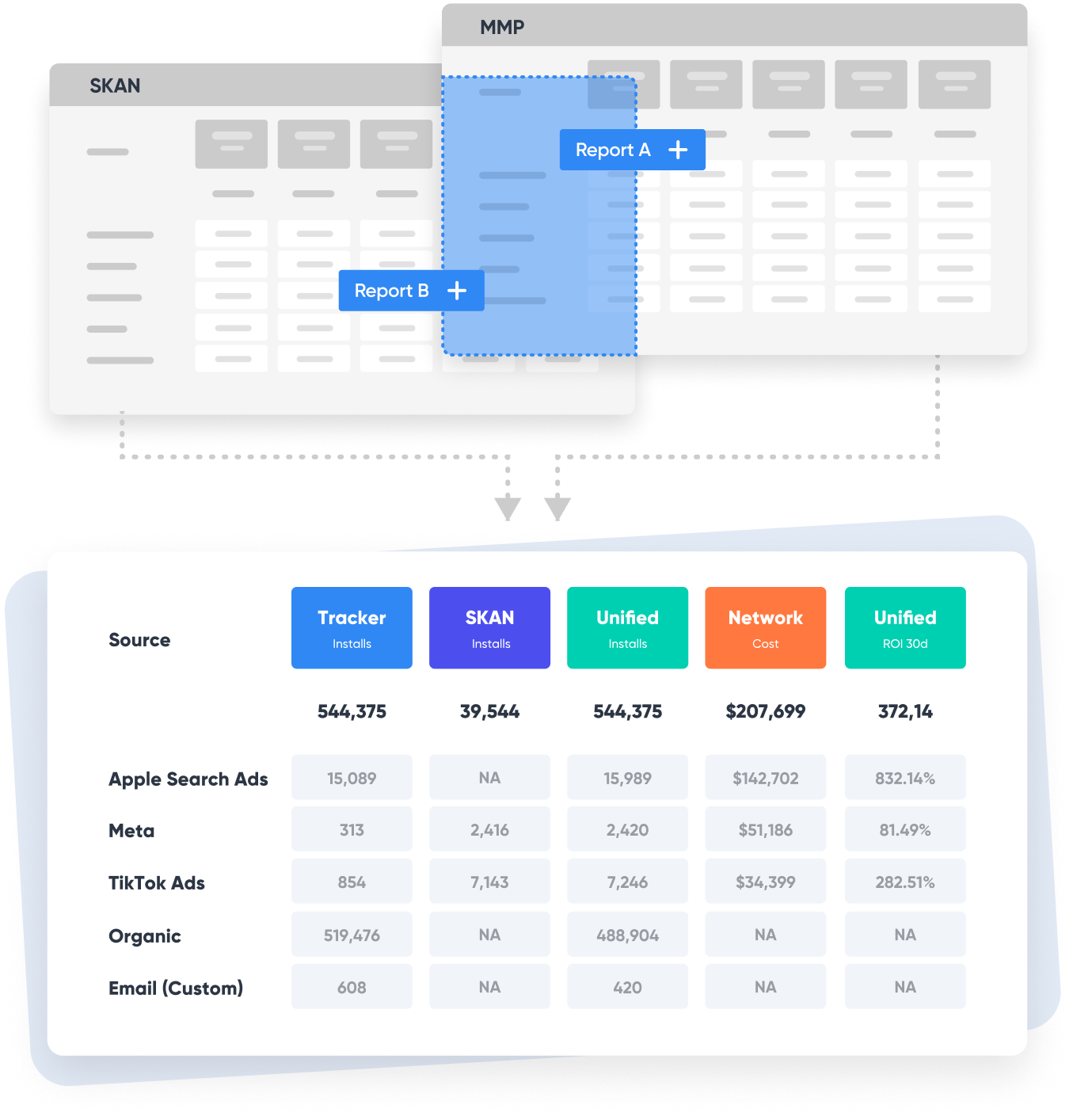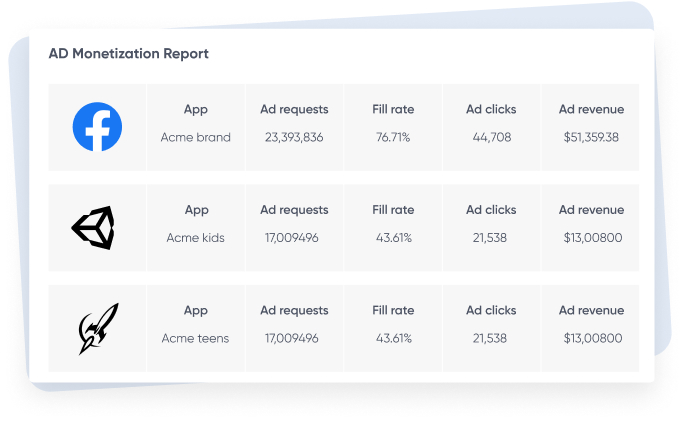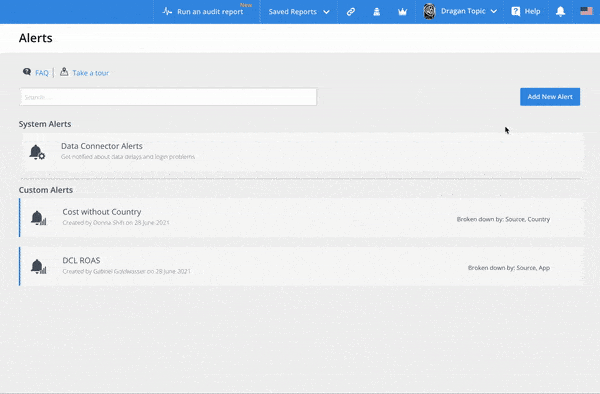Marketing Analytics
Expose new optimization opportunities to maximize results with timely, accurate and granular performance insights.
Trusted to deliver the most extensive data, for optimized campaign performance
The Singular Promise
Unrivaled ROI insights to understand your marketing efforts
Ready to make your data work for you?
Solutions for today’s Marketing and Analytics teams
Analyze granular ROI Insights
Uncover accurate and timely insights to optimize your marketing ROI.
Access Singular’s pre-configured reports for a seamless view of your marketing data enriched with dimensions, metrics and KPIs.
Customize your data views
Quickly create custom dimensions and build reporting dashboards with widgets tailored to your needs.
Singular Dashboards provide an array of data visualizations that support all data types, including ad spend, creatives cross-device attribution, custom metrics and more.
Improve your performance on iOS
Unify fragmented iOS data into a single side-by-side reporting view.
Deduplicated KPIs, 35d cohorts, and true organics improve reporting accuracy, eCPI, ROI, and CAC for better optimization decisions.

Automate your data collection
Ditch the data gaps and capture the most granular marketing data from every source.
Singular’s Data Connectors mean no more building and maintaining dozens of APIs, and postback endpoints, or dealing with unreliable data pipelines.
Standardize your data schemas
Unify your marketing data with automated data standardization and matching of mobile attribution data, web attribution data, cross-platform tracking, SKAdNetwork, ad revenue, and upper-funnel data like cost, creatives, and bids.
Drive internal efficiencies
Automatically make data accessible to your stakeholders.
Singular’s seamless plug-and-play ETL transfers your normalized data directly into your chosen BI or reporting tool.
Put your visuals to the test
Visualize ad assets and their performance, including ROI, in a side-by-side view.
Singular provides the full picture of how an asset (or group of assets) is performing across different campaigns and sources.
Boost your ad monetization efforts
Automate ad revenue data collection and align your monetization and user acquisition teams.
Singular is integrated with every ad monetization mediator and dozens of ad networks to cover all ad mon and ROAS reporting needs. To top it all off, Singular offers more ad revenue calculation options than any other provider.

Keep on top of your game
Stay in the know with automatic monitoring and notifications for all your marketing campaigns.
Singular alerts you when your data is delayed, along with custom alerts about significant changes in your metrics.

Customize your fraud reporting
Tailor your fraud reporting to better protect your ad budgets.
Singular’s fraud prevention suite utilizes 50+ prevention methods to ensure maximum protection against existing fraud threats and unknown threats to come.
Marketing Analytics FAQ
Singular pulls data daily, and we pull data for the last 7 days.
By default data is pulled twice a day:
– The first data pull begins at midnight (customer’s time zone) and takes several hours, depending on the data load.
– The data should be ready for viewing in your reports in the morning at 8:00 a.m. in your time zone.
– A second data pull is run at 1:00 p.m. PST/PDT to add in any data that may have accumulated since the earlier pull.
Singular starts pulling yesterday’s data first, then starts pulling data for further back. The data pull for yesterday’s data may be completed earlier.
– New data can be viewed in close to real time in user-level logs (see the Export Logs and User-Level Data FAQ). Allow 5-10 minutes for data processing.
– Data can also be viewed in real time in the SDK Console (see the SDK Console FAQ). Allow several seconds to a minute for data processing.
– New data is aggregated and pulled into the reporting system every hour, in a process that may take up to an hour. This means that the tracker data you see in aggregated reports (e.g., the Reports page or the Reporting API). is up to 2 hours old.
– Cohort
– Data is calculated each time you run a report.
– For most networks, we pull data for 7 days back each time by default, to get not only the stats for yesterday but also the most up-to-date stats for the entire past week.
– For Facebook, Google, IronSource, AdAction and some other networks, we pull 30 days back.
– For Amazon Media, we pull 45 days back.
– Data from third-party trackers is pulled through data connectors, just like network/agency data for 30 days back.
Singular uses a number of different methods to integrate with partners:
– API Integrations: Singular can pull data from your reporting API. Note that the API key we use for the integration should be different per customer! We need to be able to pull each customer’s data separately in order to differentiate the data on our end.
– Dashboard-Based Integrations: If you have a reporting dashboard, we can pull the customer’s data from it.
– File-Based Integrations (Email, Google Drive, S3): Singular can ingest data from email reports as well as files shared on Google Drive or S3, if this is how you provide your reports to customers.
If you use the data destinations feature, Singular automatically exports your data to a data warehouse or third-party platform of your choice (learn more).
Data is pushed to the data destination every 6 hours. The actual freshness of the data you see in your data destination depends on when Singular originally pulled it from the source (the data connector and/or tracker). In some data schemas, you can see exactly how fresh the data is by looking at the data_connector_timestamp_utc field.
Singular’s goal is to combine campaign data and attribution data in order to give the customer a unified, high-granularity report.
For that purpose, we need to get the most detailed breakdown of data we can, both in our analytics integration and our attribution integration.
When you provide reporting data, include at least the date, campaign, and cost fields – these are mandatory. Singular also supports creative, publisher, and platform breakdowns, and additional metrics such as impressions, clicks, and installs.
Data Destinations (Aggregate Data Schemas)
Data is pushed to the data destination every 6 hours. The actual freshness of the data you see in your data destination depends on when Singular originally pulled it from the source (the data connector and/or tracker). In some data schemas, you can see exactly how fresh the data is by looking at the data_connector_timestamp_utc field.
Data Destinations (User-Level Data Schemas)
Data is pushed to the data destination hourly. The freshness of the data you see in your data destination depends on when it was pulled from the tracker.
You can expect 95% of events to be exported to your system within 3 hours after they occurred. A small minority of events may take a longer time to be processed and exported.
When you switch from a different attribution provider to Singular, we offer you the unique option of importing your apps’ existing user base.
This import allows Singular to mark these users as existing users and keep install numbers accurate. It helps you avoid an “organic spike” when switching to Singular while also protecting you from being billed twice for the same app install.
Note that you must import the historical data into your Singular account before any apps are live in Singular and used for campaigns. If you start running campaigns before you load historical data, there will be spikes in organic installs and the attribution source for some of the devices will be incorrect.
Singular’s alerts page lets you set up automatic alerts when your data is delayed as well as define custom alerts to get notified about interesting and significant changes in your metrics.
Data connector alerts notify you when there are problems getting your data from your partner networks.
Ready for a full view of your marketing performance?





